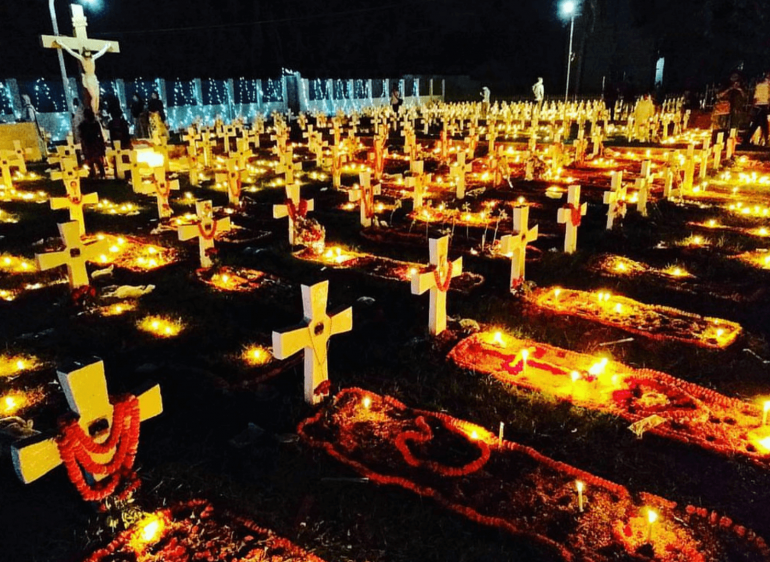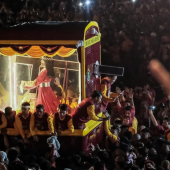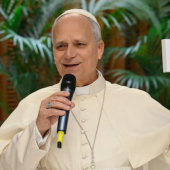OF SAINTS, SOULS and ALL THAT MATTERS

The author invites Catholics and church leadership to rekindle the faith in the resurrection, reexamine the prevailing traditions around All Saints Day and All Souls Say and to express faith in inaccurate ways in light of the Christian mystery..
"O pleasant happiness to see the Saints, to be with the Saints, to be a Saint!" exults Saint Augustine of Hippo. Each age has produced its crop of holy men and women who make the amazing galaxy of saints in the Catholic Church. There are the canonized, the beatified, the venerable, the well-known and the little known, coming from all walks of life. These cut across all time frames and age, gender and vocational divides, some named in the book of saints, many others not, all too numerous to be counted. It is thus to celebrate the grace-filled memory of all those in the realm of Heaven who have accepted the saving grace of Christ, whether explicitly or implicitly, that the Church has instituted the "Feast of All Saints."
The exact origin of this feast, which has been accorded the highest rank among feasts, viz., a "Solemnity," is unclear, observed as it has been over the centuries on different days in different places. According to Saints Ephraem Syrus (c 306-373) and John Chrysostom (c 349-407), a feast honouring all the Church's martyrs was already being observed on May 13 in the Eastern Church in the 4th century. This date, Pope Boniface IV probably chose for the dedication of the Pantheon in Rome—which he had received from Emperor Phocas (c 609)—to Our Blessed Mother and the Martyrs.
However, the first evidence of November 1 as the date of the observance was noted in England during the Papacy of Gregory III (731-741), who dedicated an oratory in Saint Peter's, Rome, to all the saints. The broadening of the feast to include all the saints and martyrs of the Universal Church and its observance on November 1 is variably ascribed to Pope Gregory IV (827-844) and Gregory VII (1020-1085).
Among the saints, who have lived and borne witness to the Paschal Mystery, Mary stands out as the Prima Donna of motherhood and virginity because of her intimate involvement with God's plan of salvation. She is, per se, the perfection of the cooperation of humankind in the sacrifice of Christ.
The saints are exquisite masterpieces of God's work. But this feast is meant to remind us that the stuff each of them is made of is human flesh and blood like ours and that to be counted among the highly favoured of the Lord, it is not enough to be a Baptized Christian. Instead, we ought to cherish in our heart, points out Saint Alphonsus Liguori, "a desire to achieve sanctity," to enter ever more deeply into the death-resurrection mystery of Christ. The liturgical celebration of the feast of all the saints of the Church provides such an occasion.
Sacred Scripture says, "It is a holy and wholesome thought to pray for the dead, that they may be loosed from sins" (2 Maccabees 12:46). And so, it is but fitting that Holy Mother Church makes it a point to draw our attention to the value intrinsic in recalling our dear departed. Indeed, all the departed in Purgatory and praying for the repose of their souls. That she does this by setting aside a day annually is even more significant. And what gives depth to the significance is the date, so chosen as to immediately follow the Solemnity of All Saints whereby, having honoured the Church Triumphant in Heaven on November 1, the very next day the Church Militant on Earth, with due concern, turns her gaze onto the members of the Church Suffering in Purgatory. In so doing, she demonstrates the supernatural bond of the 'Communion of Saints in no uncertain terms.'
All Souls Day owes its origin to the feast established in 998 by Saint Odilo, the fifth Abbot of Cluny, to enable his monks to offer special prayers for the departed souls. This Cluniac custom gradually gained popularity and spread to parts of Europe and Latin America. The Council of Trent formally declared that the souls in Purgatory both need and benefit from the prayers and works of charity of all Christian believers as aids to eventually surmounting their spiritual separation from God. Catholic tradition holds that even though some who have died are presently in a state of suffering, they nevertheless experience consolation in knowing that they will, in time, as a result of our prayers, be fully united with the Creator in His glory and happiness. It is important to note here that the Church has enriched with a Plenary Indulgence the custom of visiting the cemetery to pray for the deceased during the Octave lasting 01-08 November 1-8, and a Partial Indulgence on other days. Besides, on November 2, one Plenary Indulgence applicable to the dead can be gained under the usual conditions—visiting a Church/Cemetery, receiving the sacraments, and praying for the Pope's intentions. This year, the Vatican extended the indulgences for the entire month of November.
Three Masses - The custom of celebrating and attending three Masses on All Souls' Day probably originated among the Spanish Dominicans in the 15th century. But it was Pope Benedict XV who, seized of the number of casualties in World War I and mindful of the non-feasibility of the offering of individual Masses for the numerous dead, granted by a decree dated August 10, 1915, all priests the holy privilege of celebrating three Masses on this day—one for their own intentions, another for all the faithful departed and a third one for the intentions of the Holy Father. For the faithful in general, this practice comes as a bonanza of sorts, for on this day, many indeed make it a point to attend three masses for the souls of their dear departed. This day, however, is a day of hope for the entire Church, focusing as it does on the fullness of the Paschal Mystery, enveloping every believer in its redeeming embrace. Proof of this hope is clearly in evidence on the nights of November 1 and 2 when entire cemeteries are bedecked with flowers of every hue and delightfully aglow with the flickering flames of candles and oil lamps – the little flames a sign of prayer and the flowers a sign of hope that the Lord will be merciful on Judgement Day both to those gone before us marked with the sign of Faith and to those of us yet to be called to our destiny. And so, the general emphasis is now more on a meaningful celebration of the one "source and summit of Christian worship" that the Eucharist is, with appropriate congregational participation, rather than a rushed affair of a string of masses hurriedly celebrated and distractedly "attended" at one go.
Associated practices - There are other customs associated with this feast that we—in Asian countries particularly—need to turn our attention analytically to. In the Middle Ages, it was commonly believed that "the souls in Purgatory could appear on this day as will-o’-the-wisps, witches, toads, etc., to persons who had wronged them during their life" (New Catholic Encyclopaedia). In our own time and day, there exists this notion that the souls are released from their bondage on the night of November 1 and roam around till the noon of November 2. Whence stem these notions is not known, but festive food and drink are found placed on graves, doorsteps, or rooftops on All Saints night in anticipation of a nocturnal home visit from the deceased. Plates and bottles found empty the following day imply that the soul did come, after all, those concerned naturally rejoicing; an offering remaining untouched, however, floods the minds of those concerned with doubts and remorse, and the fear that the soul in question has been offended on some account. Hardly does either side care to understand that the offerings were either gulped down by a drunkard on his night rounds or feasted upon by strays, be these the canine, feline, or the rodent variety. And amazingly, both sides include not merely the illiterate in villages but a large number of the elite and the educated living in city high-rises.
Yet another belief that sends its adherents on a merry-go-round has to do with the blessing of graves and niches that takes place on the morning of All Souls Day, what with a family grave in one parish, the niche of an in-law somewhere else, and friends interred elsewhere. It is generally assumed that the presence of a family member near the grave or niche of a dear one at a given time is essential to ensure that the holy water sprinkled or splashed around by a priest falls on the grave or niche, failing which the soul will suffer grievously for another year. Phew.
There is also this other misconception concerning masses to be "heard" on All Souls Day. While we may each remember our own dear departed at least on specific significant dates through the year, there are innumerable souls in Purgatory who have no one earth to pray for them. It is these that the Church would want her children to lift to the Almighty in fervent prayer. Could we henceforth, as responsible believers, give due consideration to this important aspect of All Souls Day? As for the other practices described above, there must be many more, as varied as the backgrounds we each come from and the country we inhabit. Perhaps our priests could consider touching on the more popular ones in their homilies, announcements and writings, so as to dispel all related myths to the edification of the faithful and the glorification of the Risen Lord.
Of niches and permanent graves - An unmistakable reality connected with All Souls Day is the final resting place of the believer, viz., the graveyard. That's the place to which, at some stage or other in life, we find ourselves accompanying the mortal remains of someone or other who's been part of our life on earth and to which we ourselves will one day go. This, of course brings us face to face with the twin issue of graves and niches.
The prescribed form of disposal of the mortal remains of a Christian is burial. Burial remains the generally preferred form, the other form approved by the Church, viz., "cremation," is slowly gaining ground. Be that as it may, what is of concern is the modalities involved as far as burial is concerned. There is no denying the fact that there exists an acute shortage of burial space. With the steady growth in numbers both in terms of parishes and parishioners, new burial grounds are difficult to come by. Put differently: there isn't enough place to stay alive; where is the space to lie dead? And so, the issue is certainly serious. And the issue but naturally includes the question of permanent graves. Could the Church in Asia give an equally serious thought to this issue that needs to be tackled on a war footing?
Undeniably, ridding permanent graves of their permanence would help free valuable burial space in most parishes, the need to demand burial space from the government or the municipality thus dropping considerably. So far, one knows of only one parish in the vast Archdiocese of Bombay in India where this has been done, and that is the Church of the Holy Magi in Gorai village. The space from the front door of the Church right up to the gate that was used for burials has, some years ago, been concreted, with the stone slabs of permanent graves being rearranged with minimal adjustments. The place is now used as a playground for the parish school and as an open-air hall by the parish; burials now take place only in the space permanently earmarked for temporary graves. Hats off to the farsightedness and courage of the then Parish Priest and Parish Pastoral Council.
The grave, our permanent home . . . ? - Come to think of it, is there really a need for a permanent grave at all? We consume but the one body of Christ and, like him, are buried in the same earth to co-mingle with one another until the day we stand shoulder to shoulder before the final judgment seat. Couldn't we possibly, in crowded cities at least, leave the "permanent grave" status to graves in private or municipal cemeteries?
This brings us to the question of "niches," which could someday snowball into an issue, and space again becomes a casualty. One would understand burial as returning to earth what came from earth, for dust we are and unto dust shall we all return, attests sacred Scripture. The niche stands out as a contradiction. In burial, we surrender; we let go. To entomb in a niche, we take back. Why? What's the relevance? Do we really need to have the remains exhumed for us to remember our loved ones? Isn't there much else for us to remember them by? And what about the torment and the tears that accompany such exhumation – do we need to go through it all over again eighteen months after the death and burial itself?
Both the grave and the niche are sensitive matters and thus challenge our thought process. Add to it the space occupied for aye by embalmed bodies and you have a catastrophe staring you in the face. They are issues the Church needs to address on a priority basis. What relation do these issues have to All Souls Day, one might, however, ask. The answer is obvious: we need to understand the Death-Resurrection mystery in its correct perspective to be able to better appreciate the relevance and significance of both ALL SAINTS DAY and ALL SOULS DAY. This, in turn, will have us singing with Bruce Springsteen:
"When the Saints go marching in
When the Saints go marching in
Lord, how I want to be in that number
When the Saints go marching in!"
Radio Veritas Asia (RVA), a media platform of the Catholic Church, aims to share Christ. RVA started in 1969 as a continental Catholic radio station to serve Asian countries in their respective local language, thus earning the tag “the Voice of Asian Christianity.” Responding to the emerging context, RVA embraced media platforms to connect with the global Asian audience via its 21 language websites and various social media platforms.














